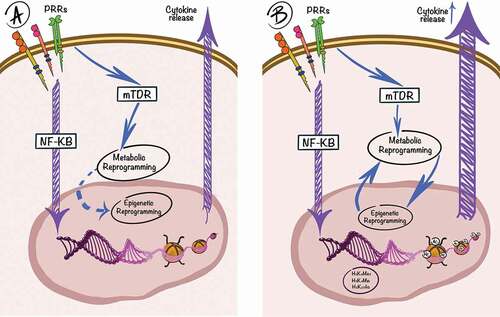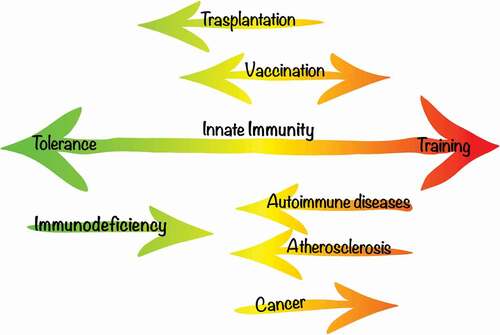Figures & data
Figure 1. A simplified schematic representation of TI. The innate immune system (purple lines) is activated by engagement of PRRs, which is followed by downstream signaling pathways, such as the NF-kB pathway, leading to transcriptional activation of pro-inflammatory genes and release of cytokines and chemokines. On the first interaction (a) with a PAMP/DAMP, an interplay between metabolic and epigenetic changes induces the trained phenotype (blue lines). Upon the second interaction (b), a more potent cytokine response will be observed, due to the functional epigenetic reprogramming of the cell.

Figure 2. Implications of TI in disease and possible TI-based interventions. In some pathology, the immune response is skewed – for example in Autoimmune disorders or Atherosclerosis, a therapeutic goal would be to generally reduce the reactivity of the immune system. Immunosuppression is a useful tool in transplantation in order to avoid rejection. A boost in immunity is favorable in cancer and potentially immunodeficient states. In the case of vaccination, TI usually acts as a nonspecific protective effect, but immunomodulation can also be an important tool to combat specific diseases.

